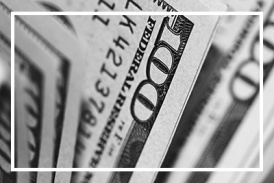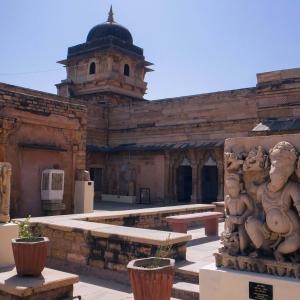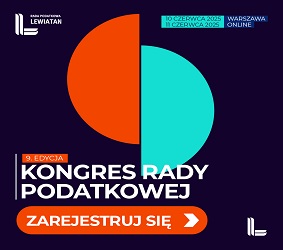Madhya Pradesh celebrates International Museum Day: Honors the Guardians of Heritage
The state prepares to showcase its legacy of conservation and commitment to digital innovation.
BHOPAL, MADHYA PRADESH , INDIA, May 16, 2025 /EINPresswire.com/ -- In anticipation of International Museum Day, observed globally on May 18 under the auspices of the International Council of Museums (ICOM), Madhya Pradesh is gearing up to honour the Guardians of Heritage, in resonance with the 2025 theme, “The Future of Museums in Rapidly Changing Communities.”Under the Culture Department of Madhya Pradesh, the Directorate of Archaeology, Archives, and Museums oversees 497 state-protected monuments and 44 archaeological museums, categorised into 7 state-level, 22 district-level, 9 local, and 6 site-level institutions.
On this occasion, the Directorate will celebrate the timeless guardians of the state’s rich history and diverse heritage—its museums.
Madhya Pradesh is home to some of the most prestigious and historically significant museums in India. Among them, Dhar Museum, established in 1902, stands as one of the oldest archaeological museums in the state.
One of the largest museums in the state is the State Museum in Bhopal, founded in 1909 and re-inaugurated in its new building by the then Chief Minister Shri Babulal Gaur on November 2, 2005. With 17 themed galleries, it remains a vital cultural landmark in the state capital.
Equally noteworthy is Gwalior’s Gujari Mahal Museum, established in 1922 by Maharaja Madhav Rao Scindia. Recognised as one of the finest museums in the state, the Gujari Mahal Museum houses an extraordinary collection of artefacts ranging from the 2nd century BCE to the 19th century CE. It also features a vast library with 4,000 books on archaeology, history, and culture.
In Indore, the Central Museum was established in 1923 by the Holkar State as ‘Nararatna Mandir’. Initially serving as an educational institution on M.G. Road, a museum was added in 1929. Due to its central location in the Holkar region, it became known as the Central Museum. In 1965, it was shifted to its present building, where it houses eight galleries and an open-air display showcasing a rich collection of historical artefacts and cultural treasures.
The Rani Durgawati Museum in Jabalpur, known for its rare collection, displays 6,163 antiquities, including a striking photograph of the Sixty-four Yoginis, capturing the mystique and artistic excellence of ancient India.
A newer yet spiritually significant addition is the Triveni Archaeological Museum in Ujjain, inaugurated during Simhasth 2016. The museum features three thematic galleries—Shaiva, Vaishnava, and Shakta—reflecting the Triveni concept, based on three major spiritual traditions: Shaivism (Shaivayan), Vaishnavism (Krishnayan), and Shaktism (Durgayan).
The Tulsi Museum, Ramvan (Satna), founded by Seth Babu Sharda Prasad Ji in memory of his father, boasts a stunning collection of 2,368 antiquities and houses the Tulsi Library, which contains a staggering 25,000 books. The artefacts were meticulously collected from 1925 to 1957, representing one of the most comprehensive private efforts in heritage preservation—later handed over to the state.
The Maharaja Chhatrasal Museum, housed in the historic Dhubela Palace, is located 17 km from Chhatarpur on the Chhatarpur–Naugaon Road. Built in the 18th century CE by Maharaja Chhatrasal Bundella as his residence, the museum was inaugurated on 12 September 1955 by Prime Minister Pt. Jawaharlal Nehru. It stands as a rare example of Bundela architecture. In addition to its rich collection, the museum features a library with over 2,300 books on history and archaeology.
The state’s vision is to enhance public access through modern digital initiatives such as 3D scanning of artefacts, VR-based interactive displays, and digital kiosks. These endeavours enable enthusiasts around the world to engage with our shared cultural heritage and honour the Guardians of Heritage.
NB
Directorate of Archaeology, Archives and Museums
email us here
Visit us on social media:
Instagram
Facebook
YouTube
X
Legal Disclaimer:
EIN Presswire provides this news content "as is" without warranty of any kind. We do not accept any responsibility or liability for the accuracy, content, images, videos, licenses, completeness, legality, or reliability of the information contained in this article. If you have any complaints or copyright issues related to this article, kindly contact the author above.
Top Ten Reasons to Attend the 2025 Scuba Show
Global Underwater Bulldozer Market Set for 8.2% CAGR, Reaching USD 1,424.2 Million by 2035
All Golden Wins Best Eye Mask in Shape Skin Awards 2025
Kalendarium
Więcej ważnych informacji
 Jedynka Newserii
Jedynka Newserii

 Jedynka Newserii
Jedynka Newserii

Handel

Negocjacje między UE i USA w sprawie ceł trwają. Przełom możliwy podczas czerwcowej wizyty Trumpa w Europie
Czas, jaki Donald Trump zostawił krajom obłożonym cłami na negocjacje, zbliża się do półmetka. Umowę podpisała Wielka Brytania, ogłoszono również porozumienie z Chinami. Unia Europejska, która jest czwartym partnerem handlowym USA, do niedawna zdawała się nie czynić żadnych postępów w rozmowach. Jednak negocjacje trwają. Zdaniem europosła Michała Szczerby z PO stanowisko Unii powinno być twarde, a przede wszystkim jednomyślne. Okazją do rozmów może być wizyta Trumpa na czerwcowym szczycie NATO w Hadze.
Przemysł
Unijne programy szansą dla polskiego przemysłu zbrojeniowego. Wkrótce uruchomione będzie 150 mld euro na niskooprocentowane pożyczki

Prace nad uruchomieniem instrumentu pożyczkowego SAFE są na ostatniej prostej. Jak poinformował MON, po wielu tygodniach negocjacji został on przyjęty przez stałych przedstawicieli państw członkowskich przy UE. Wdrożenie SAFE oznacza uruchomienie 150 mld euro niskooprocentowanych pożyczek na finansowanie inwestycji państw członkowskich w obronność. Wysiłki krajowe i unijne koncentrują się teraz na zwiększaniu potencjału europejskiego przemysłu obronnego i budowaniu zdolności obrony i odstraszania.
Konsument
Roboty w służbie środowisku. Ograniczanie ilości odpadów możliwe dzięki automatyzacji

Sztuczna inteligencja i robotyka już dziś pomagają firmom ograniczać swój wpływ na środowisko. Korzyści z inwestycji w zaawansowaną automatyzację odczuwają także konsumenci. Przykładem może być automatyczny system pakowania wdrażany przez Amazon. Robot dostosowujący każdorazowo rozmiar papierowego opakowania do danego produktu pozwolił już zaoszczędzić 3 mln t materiału opakowaniowego, co oznacza dla kupujących mniej materiałów do utylizacji i prostszy recykling.
Partner serwisu
Szkolenia

Akademia Newserii
Akademia Newserii to projekt, w ramach którego najlepsi polscy dziennikarze biznesowi, giełdowi oraz lifestylowi, a także szkoleniowcy z wieloletnim doświadczeniem dzielą się swoją wiedzą nt. pracy z mediami.














.gif)

 |
| |
| |
|